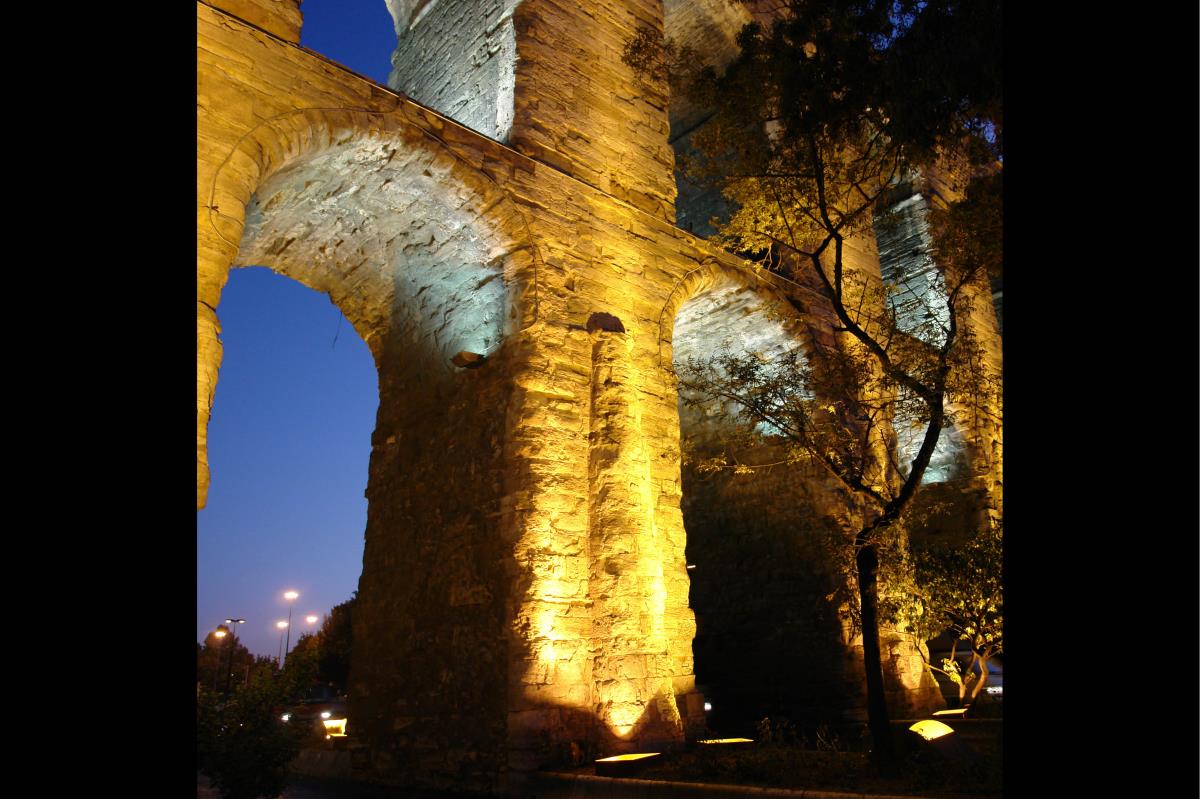
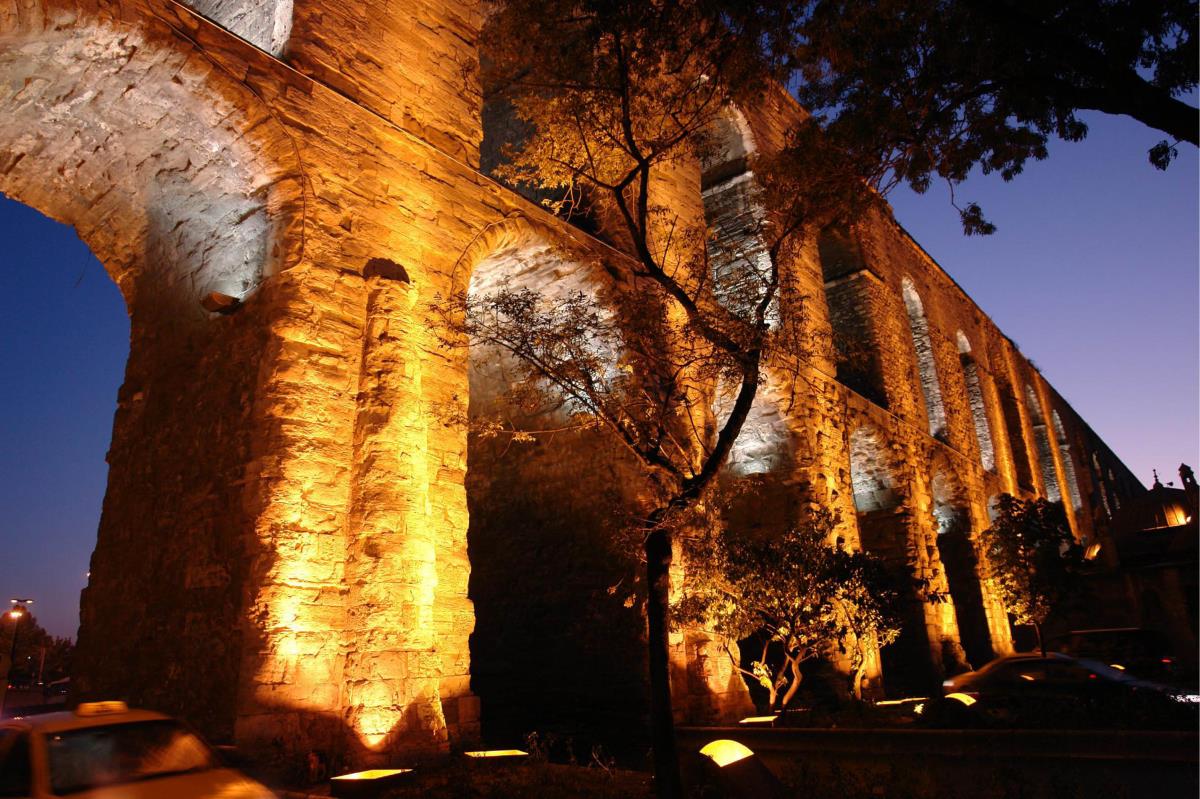
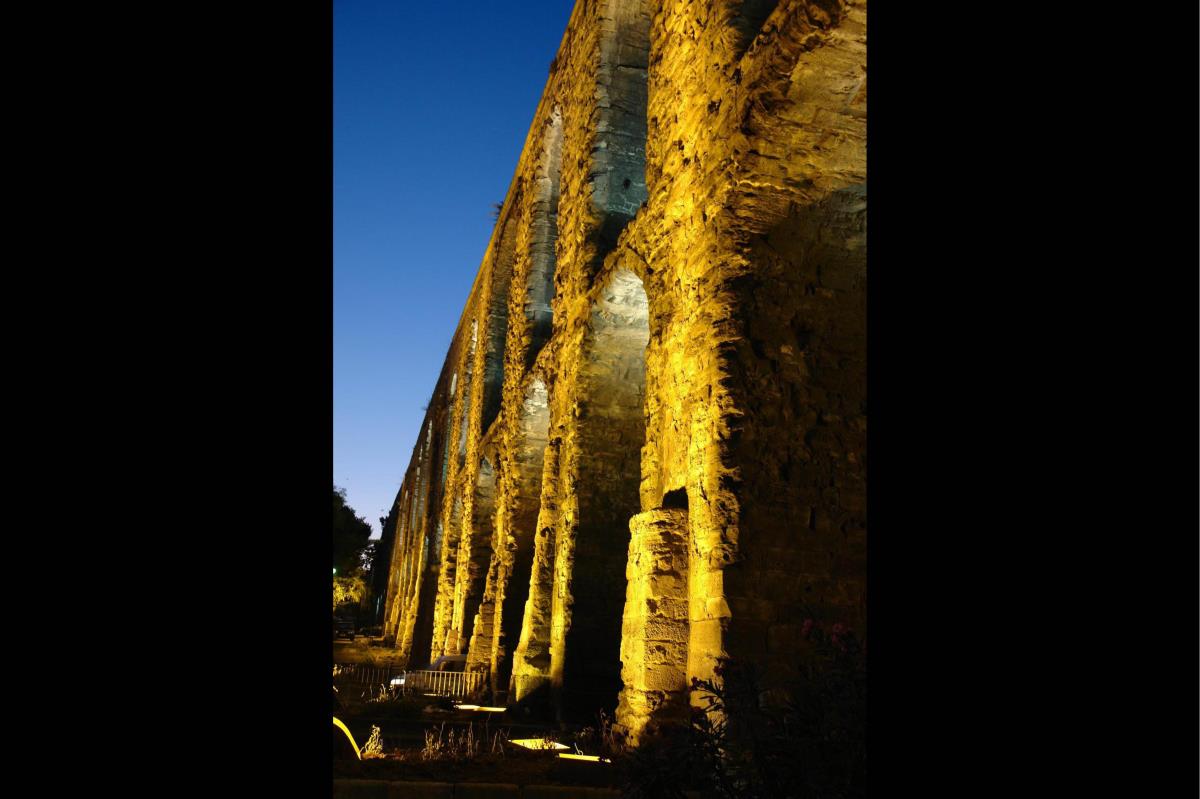
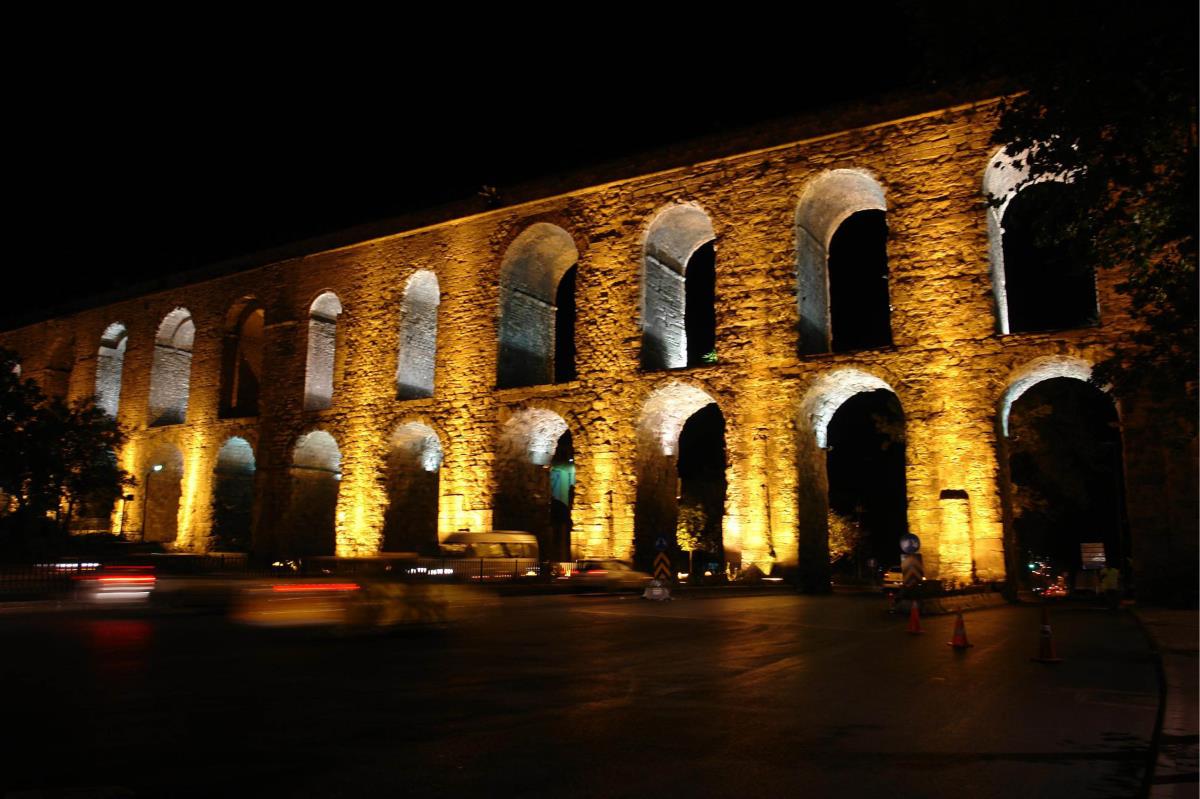
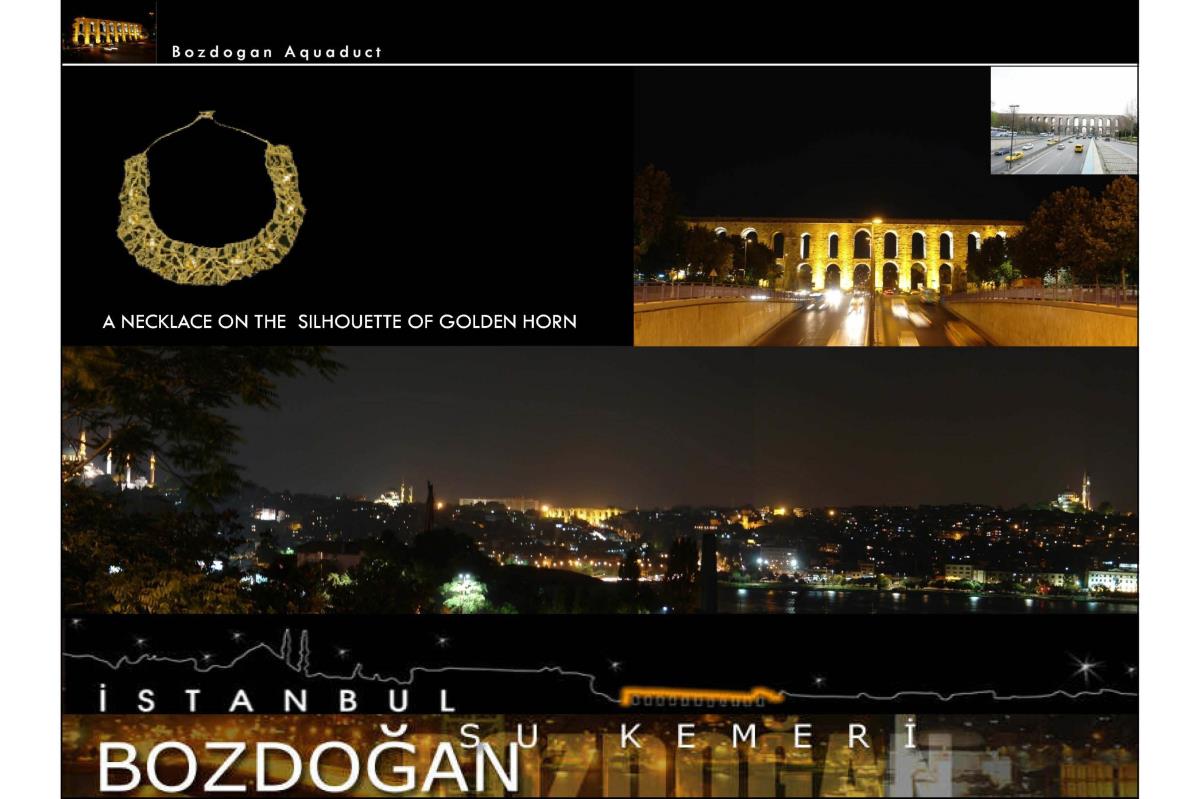
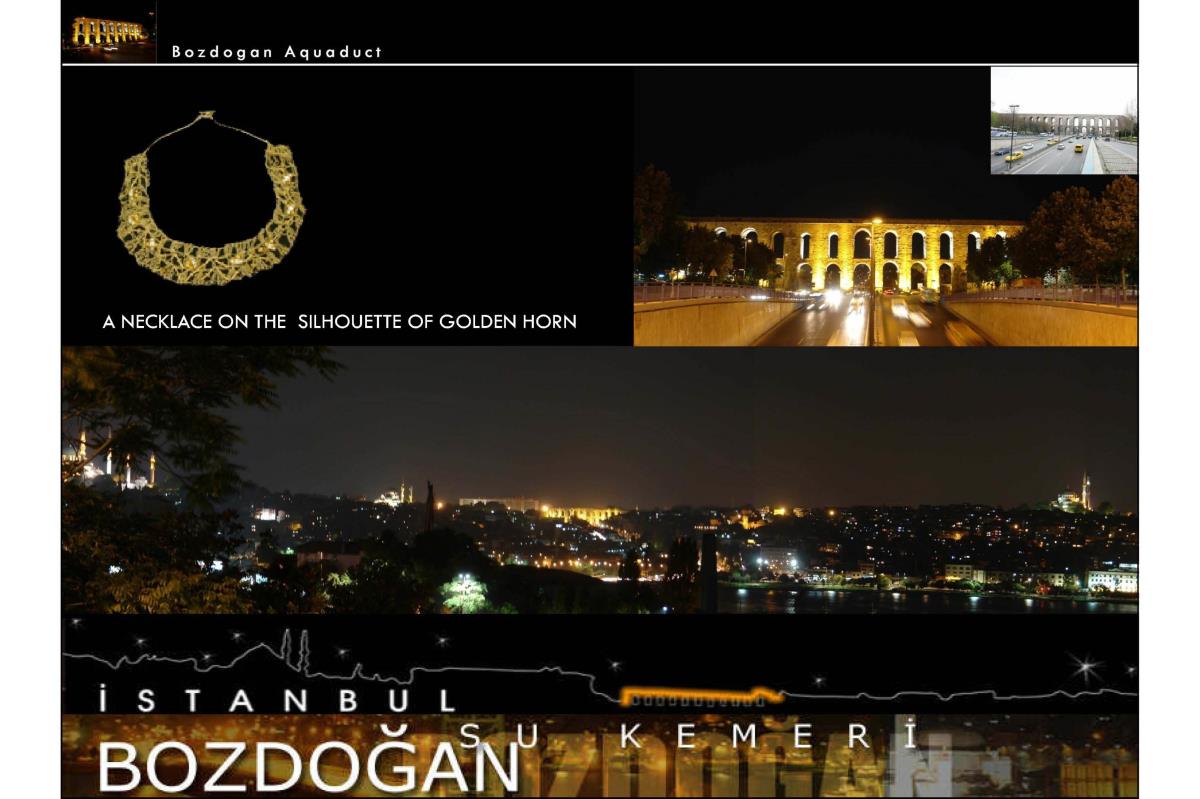
Location, year: Unkapanı, İstanbul 2007
Client: Istanbul Metropolitan Municipality
Scope: Facade Lighting Design
Istanbul, one of the oldest and precious cities in the world, has always been a center of attraction with Bosphorus, Golden Horn, culture, and civilizations. Every mosque, church, fountain, city wall, and arch that has built for centuries reveals its value in different places of this impressive city that has a long story surrounded by waters.
The story of Bozdoğan Kemeri, a waterway in Istanbul that the city of waters, begins in the Roman and Early Byzantine periods. Bozdoğan Kemeri, formerly Aqueduct of Valens, was restored during the Ottoman period and started to be used again. The arch, which lies in the valley between the 3rd and 4th hills of Istanbul with seven hills, is the above-ground part of the water network built to carry water from outside the city to the center. Today, the arch under which the traffic going to Unkapanı-Yenikapı direction passes under the impression of a border with its location.
Despite all its splendor and experiences, the aqueduct we passed through with admiration in general, what should make us feel at night, and what kind of value it will have in other urban values was an important subject for the beginning of the design. While emphasizing its historical past, length, and water connotation, it should also have respected the city skyline by completing visual comfort and safety criteria. Every step to be taken had to be part of a future Istanbul Lighting Master Plan.
"A necklace in the silhouette of the Golden Horn" became the determinant of the theme due to history and architectural features because this aqueduct looks like a very precious necklace that connects the two valleys with the location. The yellowish-orange warm light color, which expresses its historical past and value, was used along the two-sided façade of the arch to strengthen its length, size, and border impression. The water element, the reason for construction, was interpreted as a modern, innovative, and in-depth expression from the past to the present, with the white light color approaching blue inside the arches.
In line with all these feelings, light sources, reflector properties, positioning and light values that will verify this concept numerically were studied on the 3D model in a computer environment. The light sources determined as a result of the calculations were tested gradually with expert teams in different periods illuminated at night. In the demo studies carried out in cooperation with the municipal teams and the design group, the visual comfort and effects that are expected to feel were adjusted separately as well as the numerical values. As a result of the long tests carried out, projectors that were hidden in a special safe system in the form of urban furniture, which could meet glare, vandalism, water and design criteria especially for the front facade, were envisaged. For the interiors of the arches, locations that do not cause glare and can provide uniform light distribution were determined even in high vehicle transitions.
Now, with the new face of the arch, a clear trace of the night is seen on the Golden Horn silhouette. In the slice from Topkapı palace to Kariye Mosque, the arch surrounded by illuminated mosques around it reveals its value like a necklace. In the immediate vicinity, with the illumination of the arch completely, the user profile changes and the return to safe areas where children can play is a pleasing result. A well-lit city or city district brings a sense of happiness and ownership to its users. It is undoubted that it creates positive environments for tourism as well as creating livable environments.
Careful, attractive cities or environments are created when successful lighting is performed visually and functionally. Also, it is possible to provide a good environmental quality to the living environments. While every study to be carried out in this direction will be a preparation for 2010, it will also be an inevitable part of the Master Plan formation.
